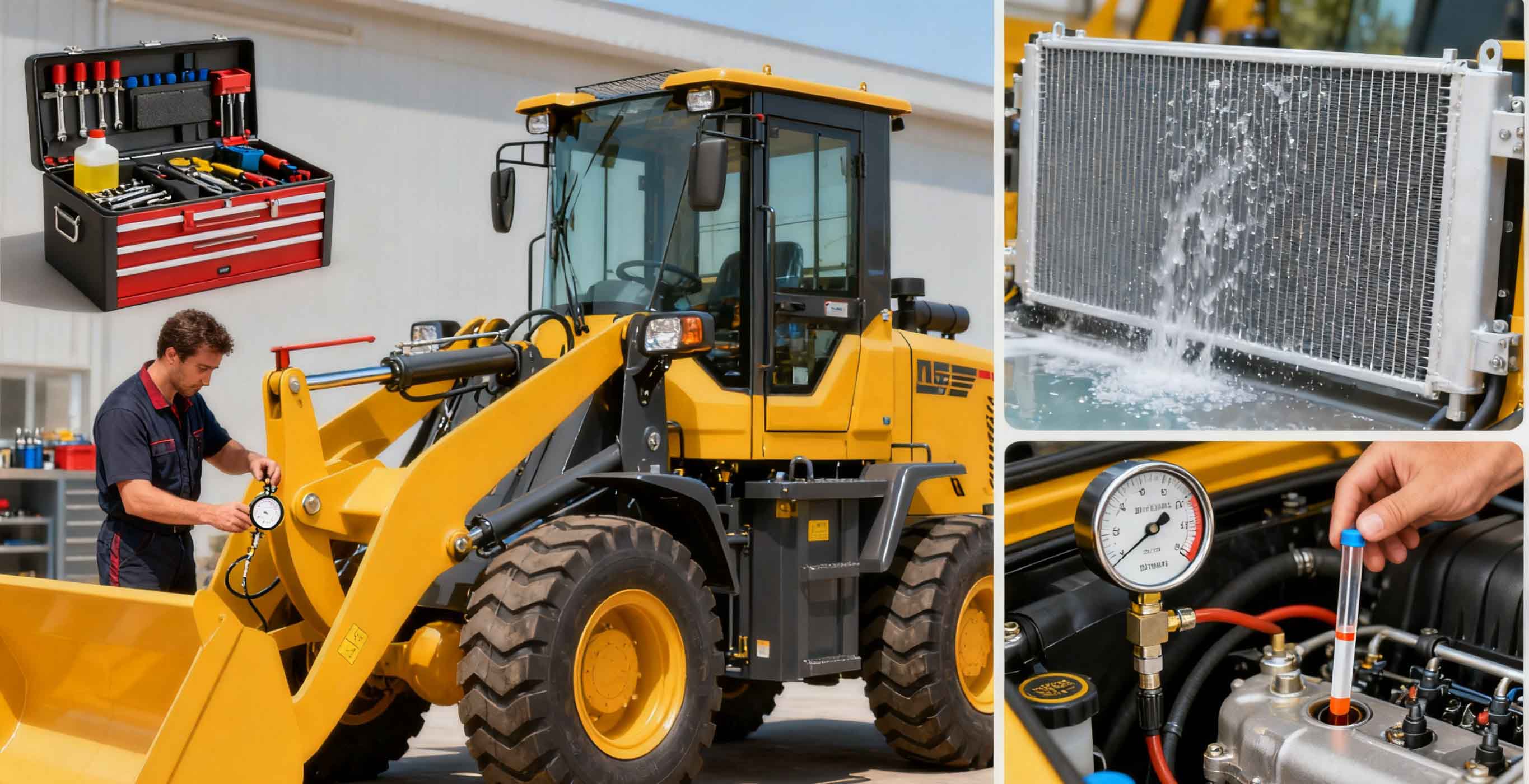🚜 Loader Daily Maintenance Guide: Keep Your Machine Running Strong!
As the workhorse of construction sites, a well-maintained loader boosts efficiency and extends service life. This guide shares simple, practical tips to keep your loader in top shape—perfect for operators, newbies, or pros! Save this guide and make your machine last longer! 💪
1. Daily Checks: A Quick “Health Check” Before Work
Spend 10 minutes each day inspecting these key areas to ensure your loader is ready to roll:
Hydraulic Oil Level: Check the tank; top up if below the mark (use manufacturer-recommended oil).
Engine Oil: Inspect the dipstick; keep within normal range. Replace if low or dirty.
Coolant: Verify radiator fluid level to prevent engine overheating.
Tires: Check tire pressure (refer to manual) and inspect for wear or debris in treads.
Bucket and Pivot Points: Look for cracks or loose bolts; ensure all are secure.
Lights and Dashboard: Confirm work lights and gauges function properly for safe operation.
Tip: Snap photos of your checks with your phone to track issues easily!
2. Regular Cleaning: Keep Your Loader Spotless
Dirt and debris are your loader’s enemies! Clean at least weekly:
Exterior Cleaning: Use a pressure washer to clean the body, bucket, undercarriage, and radiator.
Air Filter: Check the filter; blow out dust with compressed air (inside out). Replace every 500 hours.
Radiator: Clear dust and debris to maintain airflow and prevent overheating.
Cab: Clean the seat and floor for a clear view and comfortable operation.
Tip: Avoid spraying electrical components directly to prevent short circuits!
3. Lubrication: Keep Joints Moving Smoothly
Regular greasing reduces wear on moving parts:
Lubrication Points: Grease bucket pins, pivot points, and steering system weekly (use lithium-based grease).
Frequency: Lubricate every 50-100 hours (check manual; increase in harsh conditions).
Note: Clean grease fittings before applying to avoid dirt contamination; don’t over-grease.
Tip: Use GIMP to create a lubrication point diagram and stick it on your loader for quick reference!
4. Fluid Management: Keep the “Lifeblood” Healthy
Fluids are critical to loader performance. Check and replace regularly:
Engine Oil: Change every 250 hours or 6 months (use SAE 15W-40 or manufacturer-specified oil).
Hydraulic Oil: Replace every 1000 hours or annually; check for cloudiness or contamination.
Transmission Oil: Change every 1000 hours; monitor for high oil temperatures.
Fuel System: Use clean diesel; replace fuel filters every 500 hours to avoid clogs.
Tip: Log replacement dates in a calendar app to stay on track!
5. Battery and Electrical System: Stay Powered Up
A healthy battery and electrical system ensure reliable starts:
Battery Check: Inspect electrolyte levels monthly; clean corrosion from terminals.
Wiring: Check for frayed or damaged wires to prevent short circuits.
Charge Maintenance: Disconnect the negative terminal during long idle periods to avoid drainage.
Tip: If parked for over a month, start the loader monthly and run for 10 minutes!
6. Quick Troubleshooting for Common Issues
Address these common problems promptly:
Hard Starting: Check fuel level, battery charge, and clogged filters.
Slow Hydraulics: Verify hydraulic oil level and quality; inspect for leaks.
Unusual Noises: Ensure pivot points are greased; check for loose bolts.
Overheating: Clean radiator, check coolant, and monitor oil levels.
Tip: For complex issues, contact a professional repair team to avoid bigger problems!
7. Long-Term Storage: Let Your Loader Rest Right
For extended downtime, follow these steps:
Storage Environment: Store in a dry, ventilated indoor space, away from direct sunlight or moisture.
Fluids: Fill the fuel tank to prevent rust; replace all fluids before storage.
Protection: Apply anti-rust oil to metal surfaces; elevate tires to reduce pressure.
Periodic Startup: Start and run for 10-15 minutes monthly to keep components active.
Tip: Use GIMP to design a maintenance checklist and post it in the cab for reminders!



